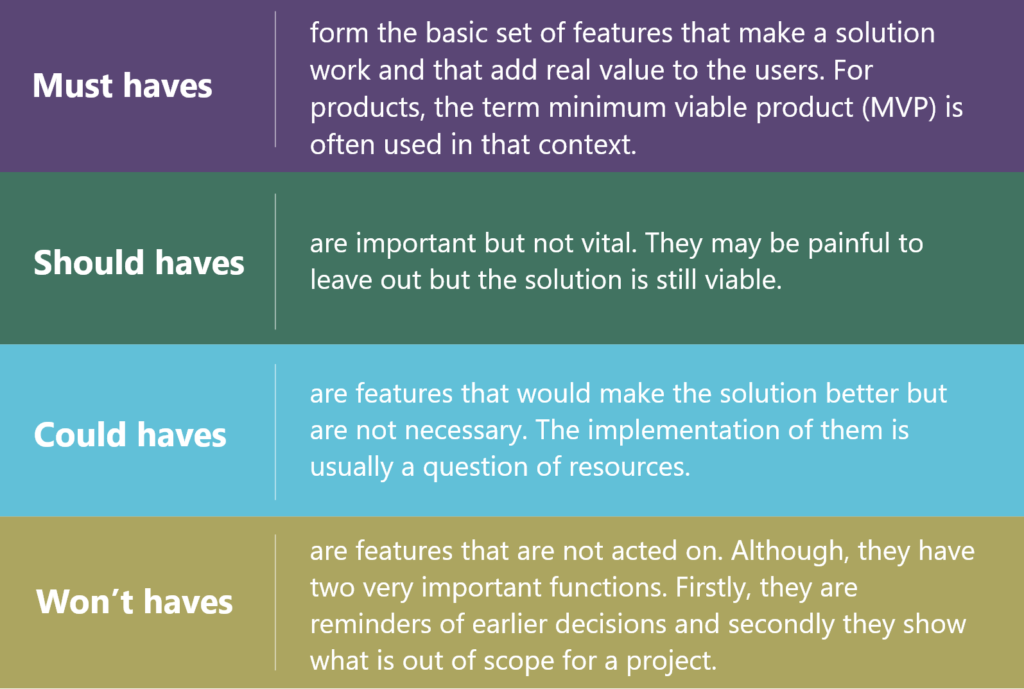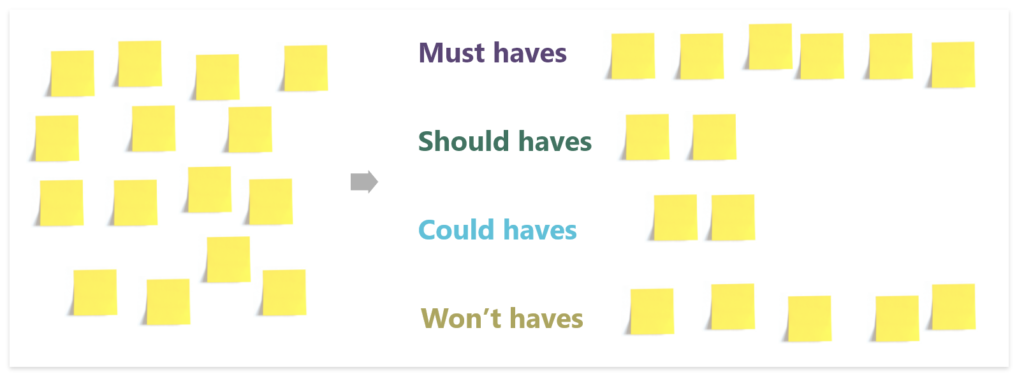Getting your priorities straight with the MoSCoW technique

“No one can have everything, so you have to try for what you want most.” – Mae West
In an environment where continuous improvement is the norm, your list of new ideas often grows faster than resources become available. Especially when working with user stories, when you try to document requirements for all involved, the amount of stories can outgrow a manageable number quite fast.
Everything is important in some way or other, which makes it hard to decide if, and when to act. One way to prioritise is to think about the impact of a story on the overall success of a project.
A very common technique to prioritise user stories and tasks in general is ‘MoSCoW’, which categorises them using the following labels: ‘Must haves’, ‘Should haves’, ‘Could haves’ and ‘Won’t haves’.
How do you work with them?
If you already work with user stories, you might have a wall where your stories live. If you’re not working with user stories (yet), a great way to sort your tasks/ideas into the categories is to write them individually on post-it notes and put them in front of you.
Now you can start creating clusters using the four labels. Start with the easy ones, those where you know instantly where to put them. For the remaining ones, a variation of the 80/20 rule or also known as Pareto principle can work well. You can start with allocating 60% of your resources (time) on the ‘Must haves’ and the remaining evenly between ‘Should haves’ and ‘Could haves’. Over time, you’ll discover what ratio works best for you.
Differentiating between ‘Should haves’ and ‘Could haves’ can be tricky. ‘Could haves’ (also known as ‘Nice to haves’) usually have less negative impact on the overall success if left out than ‘Should haves’.
Finally, it’s very important is to keep the ‘Won’t haves’. As mentioned earlier, they mark the boundaries and if it’s ‘Won’t haves’ now it doesn’t mean that it’s ‘Won’t haves’ forever. Priorities change.
Give it a try!
A great way to get familiar with the MoSCoW technique is by starting to prioritise your to-do list every morning. Decide what you ‘Must have’ done, ‘Should have’ done, ‘Could have’ done and ‘Won’t have’ done at the end of the day. You’ll see how parameters and circumstances change over time which affects the priorities. Even ‘Won’t do’ tasks might make it into the ‘Must haves’ one day.
Not familiar with user stories? Learn more here. To continue the conversation, contact Andrea Scheuringer, or share your thoughts and ideas via Yammer, Twitter or LinkedIn.


